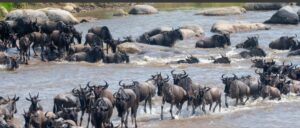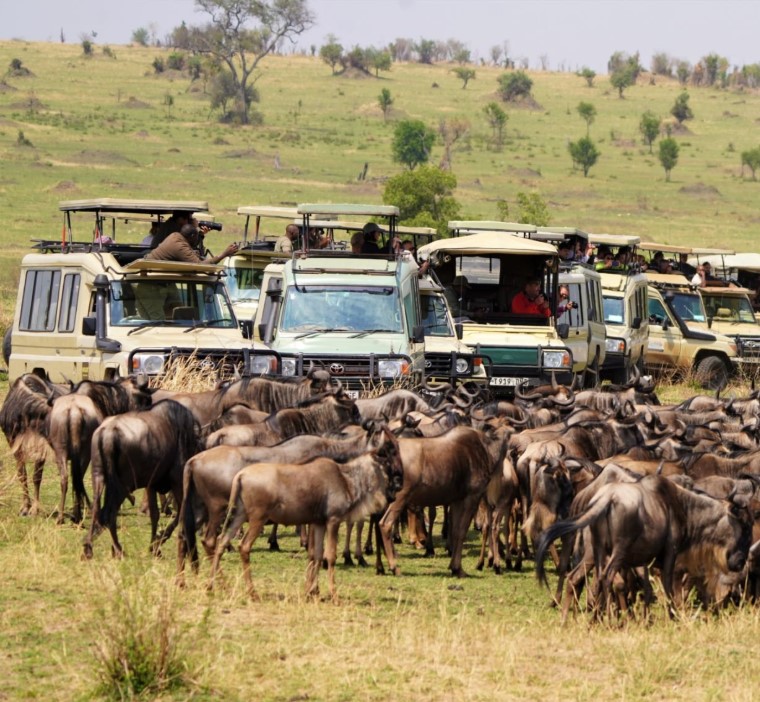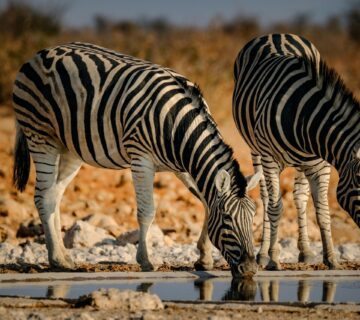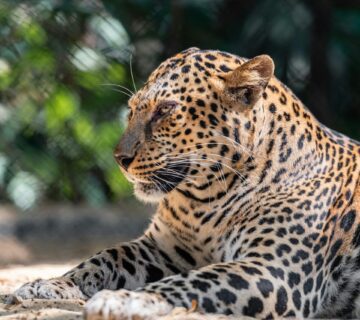What Is the Best Month for Wildebeest Migration?
Every year, over two million wildebeests joined by zebras and gazelles embark on one of the most awe-inspiring natural spectacles on Earth: the Great Wildebeest Migration. If you’re dreaming of witnessing this extraordinary event, you’re probably asking, What is the best month for wildebeest migration? The answer depends on what part of the journey you want to experience. In this guide, you’ll find everything you need to plan your safari around the migration told from a human-first perspective, shaped by real encounters and heartfelt moments in the African wild.
A Natural Wonder Like No Other
There’s something profoundly humbling about watching thousands of animals move in synchronized rhythm across the plains of East Africa. The thundering hooves, the swirling dust, the life-and-death drama at river crossings all of it is part of a cyclical pilgrimage that takes place between Tanzania’s Serengeti and Kenya’s Maasai Mara.
Having guided and experienced this spectacle multiple times, I can assure you: no two moments are the same. Whether you’re catching your breath as wildebeests leap into crocodile-infested rivers or quietly observing newborn calves wobble to their feet, the migration touches your soul.
Understanding the Wildebeest Migration: A Month-by-Month Breakdown
To know the best time for you, it’s important to understand how the migration flows through the year. Here’s a human-centered breakdown of what happens each month:
January March: Calving Season in Southern Serengeti
Where: Ndutu Plains, Southern Serengeti (Tanzania)
What to Expect: New life and predator action.

In January, the herds are scattered across the nutrient-rich plains of Ndutu and the northern parts of the Ngorongoro Conservation Area. By February, the calving season peaks. Imagine the sight: over 8,000 calves born each day. It’s a deeply moving experience to witness a newborn’s first steps under the protective eyes of its mother.
But where there is birth, there is also danger. Predators like lions, cheetahs, and hyenas are always nearby. The drama is raw, real, and unforgettable. If you’re interested in seeing wildlife interactions up close, February is one of the best months for wildebeest migration.
Ideal For: Photographers, wildlife lovers, and travelers who want to witness new life and big cat action.
April – May: The Green Season and Northward Trek
Where: Central Serengeti (Tanzania)
What to Expect: Lush landscapes, fewer crowds.
By April, the rains have transformed the Serengeti into a green paradise. The herds start moving northward, slowly but steadily. These months are less crowded with tourists, making it a more intimate time to be on safari. The grass is tall, and the scenery is cinematic perfect for those who want solitude and sweeping views.
Though river crossings haven’t started yet, watching the herds on the move, stretching as far as the eye can see, is still breathtaking.
Ideal For: Peaceful safaris, budget travelers, and nature lovers seeking a tranquil experience.
June – July: Grumeti River Crossings Begin
Where: Western Corridor of Serengeti
What to Expect: First river crossings and thrilling action.
June marks the start of the dry season. As water sources dwindle, the herds push toward the Grumeti River. While not as dramatic as the Mara River, the Grumeti crossings still deliver heart-pounding action. Giant crocodiles lie in wait as wildebeests plunge into the river, driven by instinct and desperation.
By July, the herds reach northern Serengeti, preparing for the biggest challenge yet: crossing into Kenya.
Ideal For: Adventure seekers, wildlife enthusiasts, and those wanting fewer crowds before the peak months.
August – October: Mara River Crossings – The Migration’s Climax
Where: Northern Serengeti (Tanzania) and Maasai Mara (Kenya)
What to Expect: The iconic Mara River crossings.
If you’ve ever seen photos of wildebeests leaping off riverbanks into swirling waters filled with crocodiles, they were likely taken between August and October. This is the most dramatic, high-stakes part of the migration. The herds gather on the banks of the Mara River, hesitating, sensing danger, then suddenly surging across en masse.
I’ll never forget the first time I watched a crossing my heart pounded as much as theirs. It’s emotional, chaotic, and unforgettable.
Because this is the peak of the migration, accommodations can be pricier and harder to book. But if you want that bucket-list moment, this is the time to go.
Ideal For: First-time safari-goers, photographers, and thrill-seekers.
November – December: Return to the South
Where: Eastern and Southern Serengeti
What to Expect: The circle continues.
After the rains return in November, the herds begin their journey back south, retracing their steps to where it all began. The pace is slower, the urgency gone. The plains begin to fill with new grass, preparing to welcome the next calving season.
December is a beautiful time less crowded than peak months, with excellent game viewing and dramatic skies. It’s also a perfect holiday getaway for those wanting to swap snow for savannah.
Ideal For: Families, return travelers, and those seeking a more relaxed safari.
So, What Is the Best Month for Wildebeest Migration?
The short answer: It depends on what you want to see.
Want to see babies and predators? Go in February.
Want fewer tourists and green landscapes? Try April or May.
Want to see river crossings? July to September is your golden window.
Looking for a festive season safari? Choose December.
Personally, I believe August offers the most iconic migration experience, with heart-racing Mara River crossings and incredible predator-prey encounters. But I’ve also come to love the quieter, more intimate feel of the green season in May—when it feels like the Serengeti is all yours.
Tips for Planning Your Wildebeest Migration Safari
Book early – Especially if you’re traveling between July and September.
Choose your location wisely – Migration patterns are weather-dependent. Work with a trusted tour operator who can adjust your itinerary based on recent herd movements.
Pack for the season – Mornings can be chilly in June August, while March–May can bring afternoon showers.
Bring binoculars and a good camera You’ll want to relive these moments.
Be flexible – Nature doesn’t follow a strict calendar. Sometimes the magic is in the unexpected.
Final Thoughts: A Journey That Stays With You
The Great Wildebeest Migration is more than a wildlife event it’s a story of survival, courage, and nature’s endless rhythm. Whether you watch a newborn take its first breath or witness the perilous plunge into crocodile-infested waters, the migration stirs something deep within.
So, what is the best month for wildebeest migration? It’s the month that brings you closest to the story you most want to witness.
Wherever and whenever you choose to go, prepare for something that will change how you see the wild and perhaps even how you see yourself.





